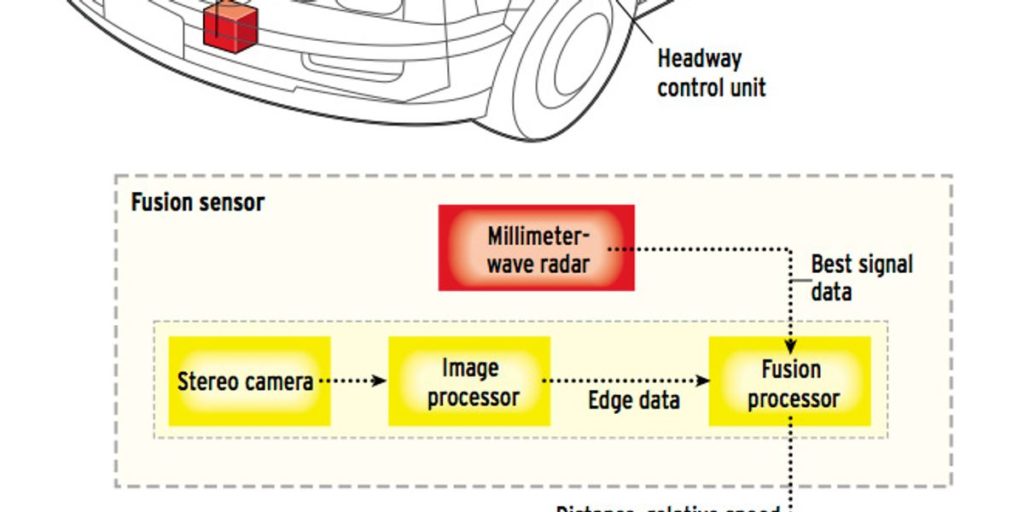Coming: cooperative collision avoidance
Though conventional ACC is still an expensive novelty, the next generation, called cooperative adaptive cruise control, or CACC, is already being tested in California and elsewhere. While ACC can only respond to a difference between its own speed and the speed of the car ahead, cooperative systems will allow two or more cars to communicate and work together to avoid a collision. Ultimately, experimenters say, the technology may let cars follow each other at intervals as short as a half second. At100 km/h, that would amount to a distance between cars of less than 14 meters (roughly two car lengths).
An experiment to try out these ideas was conducted by researchers at California Partners for Advanced Transit and Highways (PATH), a collaboration between the California Department of Transportation, the University of California, and others. In that trial, a group of three test vehicles used a communication protocol in which the lead car broadcast information about its speed and acceleration to the rest of the group every 20 ms. Additionally, each car transmitted information about its speed and acceleration to the car behind it.
According to Datta Godbole, a former research assistant at California PATH, in Berkeley, the intent of the experiment is to develop systems that allow cars to set up platoons of vehicles in an ad hoc fashion. The cars communicate with one another by exchanging radio signals, much as portable electronic devices talk to each other using the Bluetooth wireless protocol. When one car pulls up behind another, the two will scan to determine whether the other is equipped for CACC. The cars will then work out a safe following distance on the basis of their actual performance characteristics–for example, the condition of the brakes of the trailing vehicle. It could be that “you end up having a Porsche or Mercedes limited by the performance of a Pinto,” Godbole acknowledged.
Researchers at the department of electrical engineering and computer science at the University of California, Berkeley, are also working on a platooning architecture, but one in which the following distance is a fixed 1-4 meters between vehicles. The exact distance, determined by a set of control laws, again depends on the state of the least-able vehicle. Other teams are working on control laws to handle various other situations, as, for example, when a car joins or leaves the platoon, when a platoon member changes lanes or enters or exits the freeway.


